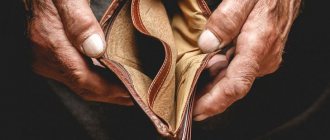What is shopaholism
Shopaholism or oniomania is an uncontrollable desire to shop. Moreover, most of them are unnecessary and represent unreasonable expenses. Otherwise known as compulsive shopping.
The word "oniomania" comes from two Greek words. Onis is for sale, and mania is madness. The translation speaks for itself. Shopaholism is not considered a disease and is therefore not listed in the International Classification of Diseases or ICD-10. According to many scientists, this is just a sign of a lack of willpower. They compare it to a craving for sweets, for example.
However, in fact, shopaholism is a real disease. According to studies, going to the store provokes the same changes in the body of a shopaholic that occur in alcoholics, drug addicts and gambling addicts. It turns out that this is the same form of addictive behavior, a mental disorder that requires treatment.
A little history and statistics
Shopaholism was first talked about as a disease and addiction back in the 19th century. German and Swiss psychiatrists Emil Kraepelin and Eugen Bleuler described its symptoms and manifestations. The most famous shopaholic of the 20th century is rightfully considered Barbara Zielinski, who even compiled a number of rules for people like her:
- Those who get up early will visit more shops.
- If you don’t buy something you need, it will harm your health.
- We won't stand behind the price.
Barbara distinguished herself by managing to spend her husband's salary in less than 2 minutes. This became a world record. The man, unable to cope with his wife’s hobbies, eventually divorced her.
Today, the largest number of people suffering from shopaholism live in America. There are about 15,000,000 of them. There are 700,000 shopaholics in England. In Russia, 7% of the population suffers from oniomania.
The most famous shopaholics of our time are Victoria Beckham and Sarah Jessica Parker. The first one already has more than 100 bags from one famous brand. And the second one cannot resist buying another pair of shoes. Sarah now has over 100 different pairs.
Psychology of shopaholism
Impulse buying has been linked to many other psychological conditions. Shopping addiction can, in turn, affect mental health. It can be difficult to pinpoint where one problem begins and another ends.
People with shopping addictions often prioritize short-term gratification over long-term consequences. Because of this tendency, some researchers classify shopping addiction as an impulse control problem.
Other experts argue that shopping addiction is a compulsive behavior. Compulsive hoarding is closely related to compulsive spending for several reasons. Both conditions usually include:
- An irresistible desire to own certain objects, even when these objects are not needed
- Fear of losing (or missing a chance to buy) a specified item
- Unusual meaning and value attached to inanimate objects
Finally, a 2014 study found that shopping addiction is associated with depression. Other studies show that shopping addiction helps people increase their serotonin and dopamine levels. In these cases, the urge to purchase may be driven by neurological and emotional needs. Shopping may provide temporary relief, but most people feel remorse after a shopping bout.
Types of shopaholics
Shopaholism manifests itself differently in everyone. In psychology, there are several types of shopaholics:
- Impulsive. Such people do not agree that they have a problem. They go to the store with a list of necessary products and things, but already there they forget about it, buying everything they see on their way. And if the store is having a sale or there are discounts, excess purchases will be made 100%.
- Conscious. The person realizes that he has oniomania. He also understands that the desire to buy new clothes or any other product appears in those moments when he is stressed. For him, going to the store is one of the ways to relax, lift his spirits and take his mind off bad thoughts. Alcoholics take alcoholic beverages for this purpose, drug addicts use prohibited substances, and conscious shopaholics make meaningless purchases.
- Purposeful. This type of shopaholic is the most difficult for psychologists to work with. Their desire to buy everything does not depend on their mood or stress. They don’t see the problem and don’t agree that they have an addiction. Purchases are made spontaneously. Moreover, in most cases they do not remember how they did it and why.
- Copycats. Shopaholics of this type will definitely buy an item that they saw from friends, acquaintances, in commercials, or just from someone on the street. Nothing will stop them.
- Saving. This kind of shopaholism is called veiled. A person sincerely believes that he knows how to save money. And he really tries to live frugally. But once you find out about sales and discounts, the situation changes radically. He rushes headlong to the store, which leads to unjustified spending and the acquisition of completely unnecessary things.
What could be the reason
One of the most common reasons is the need for positive emotions. Shopaholism is formed against the background of a feeling of inner emptiness, and with the help of purchases a person tries to fill it.
People often relieve stress when they have problems at work or tension in their relationships. A situation may arise when a woman wants to punish her partner with the help of shopping. Then she goes to the store and spends all the money from the card to which his account is linked, in order to take revenge for his bad attitude.
Another reason is the desire to assert oneself with clothes from luxury brands and expensive accessories, and in this case problems with self-esteem are usually observed.
People who are experiencing financial difficulties often become shopaholics. Against this background, stress develops, which they try to cope with through shopping. They take out loans for purchases, which leads to dire consequences.
The opposite situation is also possible – the desire to feel control over one’s own life. When making expensive purchases, people try to convince themselves that they can afford to buy an expensive, albeit unnecessary item.
Reasons for the development of shopaholism
Like other types of mental disorders, shopaholism or oniomania has its roots in childhood. There are two wrong parenting models:
- The child is made into a family idol. He is spoiled, capricious, demanding, and gets everything when called upon. As a result, an emotionally unstable, selfish person grows up. As a child, he received a lot of attention. Trying to attract him as an adult, he demonstratively spends money left and right. Moreover, these expenses are completely unreasonable.
- In the second model of upbringing, an authoritarian regime dominates in the family. Parents constantly demand something from their child. They do not show him love and affection, do not care about him. Therefore, the child feels deprived and abandoned. As adults, such shopaholics strive to make up for the lack of a good attitude. By buying unnecessary things, they show how much they love themselves. This is how they gain a sense of need.
Other reasons for the development of shopaholism are:
- feeling of dissatisfaction with oneself and life, loneliness;
- attention deficit;
- lack of love and male interest (for women);
- desire to receive recognition and praise.
Another reason for shopaholism is the desire to again experience the pleasant sensations of making a purchase. At this moment, the amount of serotonin or the happiness hormone increases in the body. It gives pleasure and also helps to cope with negative emotions.
Don't forget about the influence of advertising. Marketers know how to present a product in such a way that a person wants to buy it with all his heart. They show the relationship between a thing and qualities such as sexuality, attractiveness, status, etc. By making purchases, a shopaholic increases his self-esteem, shows his importance and financial well-being.
How to get rid of shopaholism
A person usually realizes that he has become a shopaholic. Some are even proud of it and tell their friends and acquaintances. But at the same time he feels that he cannot do anything in this situation. This is why the myth arose that oniomania cannot be treated - they simply do not try to treat it and live with this problem.
People turn to a psychologist when they develop depression due to shopaholism: due to the fact that too much money is spent on unnecessary things, scandals begin in the family, and debts need to be repaid. And this is already a very advanced stage, which requires the help of a specialist.
At the same time, it cannot be said that the person himself is not able to cope with the problem. Even when working with a psychologist, the patient must first of all cope on his own. Psychotherapy is not a panacea, but with a psychologist, the recovery process will proceed much faster.
First of all, during therapy you need to find the cause of addiction and learn to satisfy your needs in an environmentally friendly manner. Any addiction is formed due to unrecognized needs. Someone may eat away their problems, relieve stress with alcohol and shopping, but in fact want love or recognition. And here it is important to understand what need you have not fulfilled. When you learn to recognize your desires and realize them, your shopping addiction will disappear.
Signs of shopaholism
Shopaholism or oniomania has a number of characteristic symptoms:
- Shopping, visiting sales and monitoring discounts becomes the main hobby of a shopaholic. With these activities he replaces any other recreation, for example, reading books, walking in the fresh air, playing sports, watching TV, etc.
- A person develops a bad habit of buying what he doesn’t need. And he can't be stopped. In his apartment or house you can find a real warehouse of boxes and bags with new purchases. But it is unlikely that he will use any of this.
- How do you behave if you need to buy, say, a new slow cooker? Be sure to first study the assortment, compare prices, decide on the configuration and set of necessary functions. A person with shopaholism will do the opposite. He will buy everything.
- If a shopaholic does not have enough money to buy the desired product, he begins to panic, using any means to get what he wants. This often ends in taking out a loan at unreasonably high interest rates. A person who does not suffer from shopaholism usually in this case postpones the purchase until later.
- Usually shopaholics are fans of watching fashion shows and TV shows about fashion, as well as leafing through fashion magazines. They understand clothing brands and the latest trends better than others. People with shopaholism are ready to talk about these topics for days. By the way, this is often the only topic in which they are well versed.
- Walking through shops and shopping centers gives a person incredible pleasure. Even window shopping makes him happy.
- To get rid of stress or cope with anxiety and worries, a shopaholic does not go to the gym, go into nature or meet with friends. He goes to the store. This is the only thing that can calm him down and bring him to his senses.
What are shopaholics: classification
Shopaholics can be divided into several types:
- Spontaneous - people who always deviate from the planned shopping list. Even if you have a list at hand, and even if the deviation seems small. But the magic words “sale” and “discounts” do their job. This type of shopaholic considers himself to be a bit of a spendthrift, nothing more.
Sales are something that a shopaholic will never pass by in his life.
- Conscious - these people are already aware that shopping calms them down. They understand that they depend on shopping during times of worry and stress. However, the scale of the problem is also not realized.
- Purposeful - and these citizens do not even fully understand how much they spend. They just buy everything they see without remembering their money limit.
- Shop socialists vote with all their might for equality in shopping. That is, they diligently look for the same things as those around them. Do you like your colleague's handbag? I urgently need to buy exactly the same one! Your friend got a cute scarf? A shopaholic will have no peace until he sees its analogue on sale.
IMPORTANT: By the way, they depend on advertising more than others.
- Shop hoarders sincerely consider themselves to be thrifty owners who certainly will not succumb to shopping addiction. However, from time to time they buy up certain goods in batches. As a rule, promotional ones. They believe that this is how they save money. In fact, a lot of sellers are pleased and do not have time to use all the acquisitions.
By collecting a whole bunch of similar products, shopaholics sometimes think that they are saving money.
- Shop-sufferers strive to reward themselves for all life tragedies of large and small caliber. Moreover, he prefers to suffer surrounded by exclusively luxurious things. Can't indulge in depression in a illuminated bathroom? Then the onioman will fill the closet to capacity in order to somehow console himself.
- Shop maniacs - these oniomaniacs will proudly walk past sales and steadfastly accept calls to buy one product and get a second one for free. They think they know how to save money, and this is true. However, as soon as they find their fetish thing , all rationality goes to hell. The stash is instantly emptied, and the inability to purchase another bracelet, luxury cosmetics or perfume for the collection
IMPORTANT: True, this type of shopaholic is considered the least problematic and the most amenable to re-education.
If a shopaholic sees a dream item, he is ready to tear it out almost with his teeth
Consequences of shopaholism
Psychologists consider shopaholism a socially acceptable addiction. In essence, a person does not harm others. If it does not cross acceptable boundaries, then oniomania really helps improve mood and overcome stress. This is where it differs from alcoholism and drug addiction. The “patient” does not degrade as a person, does not steal or kill.
But there is still a problem with shopaholism and it lies in the deterioration of relationships with family and friends. In most cases, they do not approve of unreasonable waste of the family budget. What can we say about situations when a person takes out several loans. Sometimes all this ends in loud scandals or even divorce.
Oniomaniac himself also suffers from shopaholism. If he cannot pay off loans and debts, he develops depression, anxiety, and neuroses. The problem is that he cannot eliminate them, because he is used to doing this through purchases. The inability to get what you want provokes apathy. It turns out to be some kind of vicious circle.
What is oniomania
Shopaholism, or, as it is also called, oniomania, is not a separate psychological disease, but rather a type of emotional disorder.
Emotional distress occurs against a background of anxiety or depression, when a person perceives some life circumstances in a negative light. This causes long-term stress. As a result, we may develop various addictions and bad habits: dependence on alcohol, drugs, cigarettes. The same applies to shopaholism.
Interestingly, women are more susceptible to oniomania than men. The stronger sex is more likely to experience addiction to alcohol, nicotine, and computer games. Although there are also shopaholic men.
Advice from psychologists: how to treat shopaholism
Treatment of shopaholism begins with awareness of the problem. Then you need to find out at what point the irresistible desire to make a purchase arises. Maybe you're bored? Or are you feeling angry and aggressive? To understand exactly what pushes you to thoughtless spending, keep a diary of emotions. Write down everything you feel in moments of breakdown. This will help you see the picture from different sides.
Now think about it: what need are you replacing with shopping? Do you miss entertainment and communication with friends? Or is this an attempt to cope with negative emotions?
Next, determine what exactly you like about shopping. This could be the opportunity to spend time with friends who accompany you, looking at a product surrounded by many people, searching for the necessary thing.
How does shopaholism manifest itself?
Oniomania is characterized by a certain set of signs that manifest themselves in the behavior and feelings of a person suffering from shopaholism:
- regular aimless visits to stores, online catalogues, viewing advertising brochures, subscribing to a large number of newsletters
- careful acquaintance with the entire range of the trading platform
- passion for status magazines
- an irresistible desire to buy something without a reasonable reason
- sadness and dissatisfaction when it is impossible to regularly visit shopping establishments, a kind of “mental withdrawal syndrome”
- regretting the purchase soon after
- problems and conflicts in the family caused by the desire to acquire
How to deal with shopaholism: 10 ways
So, how to get rid of shopaholism? There are 10 ways:
- If you go to the store, take only cash with you. A credit card will give you the feeling that the money is endless. But a real bill will help get rid of it. You will understand that you are giving it away irrevocably.
- Under no circumstances should you apply for a loan if you currently do not have the opportunity to buy what you want. Sign a loan agreement only in cases where it is really necessary. This may be the need to treat a serious illness, purchase vital goods, etc. A loan is also justified when purchasing household appliances, a car and other products that are difficult to save up for.
- Always take your shopping list with you. Even before leaving home, calculate how much money you need for them. Don't deviate from what you have planned.
- As soon as you have the urge to go to the store, stop, take a break. Convince yourself that you will go there next time, and now you need to do something else. A pause gives you the opportunity to cool down and think about whether the thing you wanted to buy is really necessary.
- Another effective way to combat shopaholism is to always remember that discounts and sales are a smart marketing ploy designed to increase sales. So don't be tempted by them.
- Resist yourself from the desire to buy the first thing you come across. If you know exactly what you want, go to other stores, compare prices and quality.
- Don't forget that in a few months the new collection will cost much less than it does now. While it becomes cheaper, you will be able to understand whether you need these things or not.
- To successfully combat shopaholism, ignore magazines and fashion shows. Avoid advertising, do not go to online shopping sites.
- Find an activity that will take your mind off shopping. A new hobby can help you improve your mood and combat stress in other ways.
- Always justify your purchases. First, consider the feasibility of purchasing this or that item, then study discounts and advantageous offers.
If one of your relatives suffers from shopaholism, try to protect him from stressful situations that may provoke the desire to run out shopping. Do not conflict with him, but rather find joint activities that will give you positive emotions. If the situation gets out of control, limit the person's access to finances.
Who is a shopaholic
shopaholic
– this is a buyer who is dependent on the shopping process, while the value of the thing itself does not matter much to him.
Many shopaholics, when they come home from the store, leave their purchase in the box without unpacking it.
Onioman, already at the stage of purchasing a product, may understand that he will not use it, but he suppresses the sprouts of reason and rationality in himself.
Usually, in a state of discomfort, the legs themselves carry the shopaholic to the shopping center. Knowing his weakness, a person can convince himself that he went into the store “just to look.” But as he travels through the store, his behavior changes. Once a shopaholic sees something he likes, he can’t stop.
External manifestations are similar to those that betray an alcoholic who sees a bottle of alcohol. The person becomes excited, his face turns red, his pupils dilate, and his movements become chaotic.
It seems to a shopaholic that if he does not buy an item, he will become the most unhappy person in the whole world. A quiet voice from the subconscious says: “Maybe it’s not necessary?”, but ardor and passion overshadow it. The purchase was purchased and paid for at the checkout.
At this moment, as with any other manic passion, the shopaholic has a feeling of guilt and remorse. The person scolds himself, vows never to make impulsive purchases again, and repents.
But just as the hangover goes away and the alcoholic starts drinking again, so with shopaholism, the feeling of guilt is quickly forgotten, and the person rushes to the store again.
It happens that a shopaholic begins to struggle with his addiction. He saves money and avoids shopping centers. However, all thoughts are occupied only with the need to receive the next dose of adrenaline. In the end, the person “breaks down” and runs to buy new unnecessary things.
Symptoms of pathological shopping cravings
Shopaholism is a mental illness that affects human behavior. Symptoms of the disorder concern both volitional and psychological components. Manifestations, one way or another, are present in all patients, but to varying degrees. Here is a complete possible complex that allows you to diagnose a deviation:
- Going to the store without a specific purpose
Usually, the patient goes to large chain stores and shopping centers. The goal is not to buy something for your own benefit. What is important here is the action itself. It brings comfort to the sufferer, a feeling of psychological calm. We are not even talking about the process of acquiring something, but about being in retail premises and halls. As a rule, such people do not go to small stores. Shopaholics are interested in a wide range of products.
- View the range of products offered
This is also a symptom of a pathological process. The phenomenon becomes valuable in itself. A typical sign of shopaholism is the desire to study everything that is presented on the shelves and counters without the goal of buying something specific. Pleasure comes from just looking at goods, assessing consumer qualities, etiquette, and so on. Shopping happens spontaneously, as the pinnacle of behavioral disturbance in the disorder, oniomania.
- Shopaholism can be identified by spontaneous purchases.
This is especially noticeable to those who go shopping with the sick person. A person walks without a specific goal and suddenly picks up some thing. At the same time, he is completely unable to answer why he needs what is in his hands. And this continues indefinitely. Interestingly, the process of purchasing goods from a shopaholic takes a lot of time. It can last up to several hours, as it brings comfort and pleasant sensations to the sufferer.
- Even after the woman or man leaves the store, the process does not stop
A person will discuss what he bought with loved ones, friends, acquaintances, showing the product and talking about it in detail. The sufferer will still be unable to answer the question of why he needs this or that thing. The patient returns to the discussion again and again, as if fixating on material values.
- Often, after a purchase, a few hours or even days later, a painful feeling of guilt arises
Like “why did I do this and spend the money?” The feeling of guilt continues indefinitely. And as soon as it passes, the desire arises to go to the store again. Often sufferers convince themselves that this is the last time. Like alcoholics or other addicts. In the later stages of the pathological process, there are no such thoughts at all. The process continues again and again. Round.
- Clear signs of inappropriate behavior
Normally, a person weighs his financial desires and capabilities. But not with shopaholism. It doesn't matter if the money runs out. You can always take out a loan, borrow from friends, relatives, acquaintances. This behavior can lead to outright bankruptcy and financial insolvency. Loss of work, housing, livelihood. That’s why it’s so important to undergo treatment on time and not delay it with the help of a shopaholic.
- There is also a version of withdrawal. That is, if an individual cannot go to a store, shopaholism makes itself known through painful apathy, low mood, and emotional disorders. A man or woman becomes irritable, aggressive, whiny. This is similar to withdrawal syndrome and is quite understandable from the point of view of psychology and physiology. The body does not receive a new dose of adrenaline, the doping on which it usually lives. Recovery is gradually coming. But, as a rule, an individual cannot live a day without outside help without a store.
Clinical signs of shopaholism vary from case to case. Only a psychologist or psychotherapist can put an end to the issue.
The causes of oniomania are in the head
There can be a lot of reasons for shopaholism: lack of attention or its excess in childhood, an insurmountable feeling of loneliness, stress after a breakup, the illusion of power and wealth, lack of happiness or even sexual dissatisfaction. Here you will have to delve into yourself.
Donald Black from Iowa State University, in his article in Esperanza magazine, noted that approximately two-thirds of people suffering from the problem of shopaholism are susceptible to depression and neuroses.
Don't buy into discounts
For those victims of shopaholism, who are already too late to educate, we can recommend the following “treatment”:
● Always pay in cash only. Credit cards create the illusion that you are not spending your own money, and they also make it difficult to control your expenses. ● Make all purchases strictly according to the list, or better yet, take with you an adequate companion who will keep you from unnecessary spending. Remember that discounts are not a reason to buy; buy only what you really need. ● “Forget” money at home more often, let only the necessary minimum be in your wallet (for travel and lunch in the canteen). ● Even if you really like the item, do not buy it right away, ask to put it off until tomorrow. Usually, sobering comes as soon as the little thing disappears out of sight. Well, if this does not happen, consider it yours. ● Women should not visit the store 10 days before menstruation. British scientists have concluded that the reason for women's reckless shopping is a hormonal imbalance caused by the approach of menstruation.











